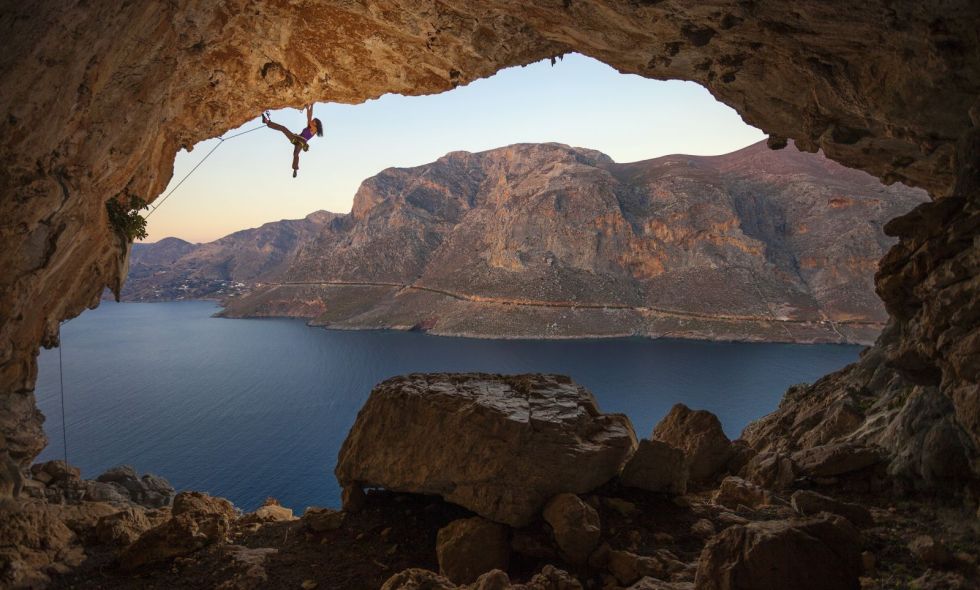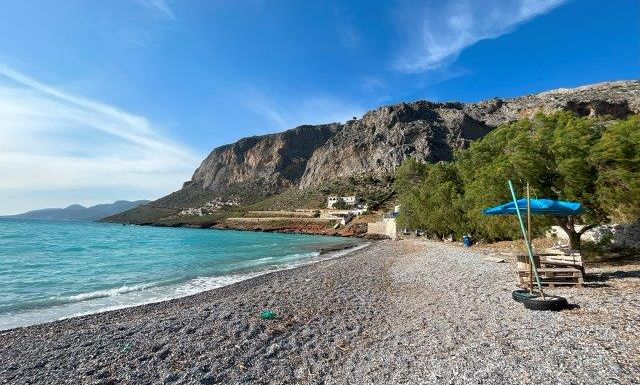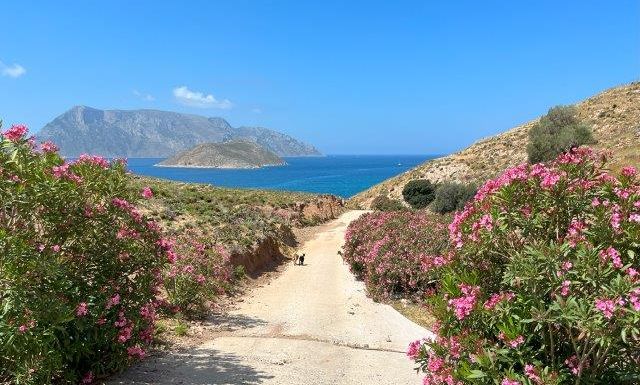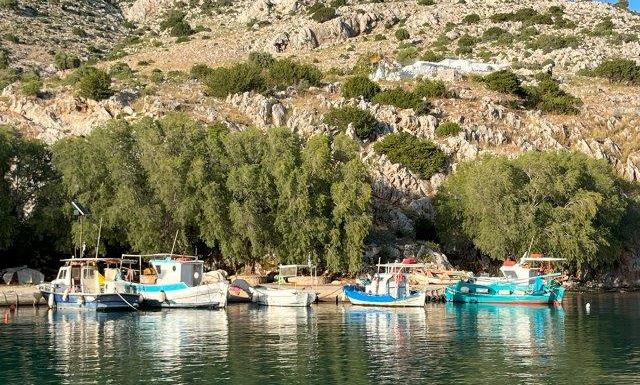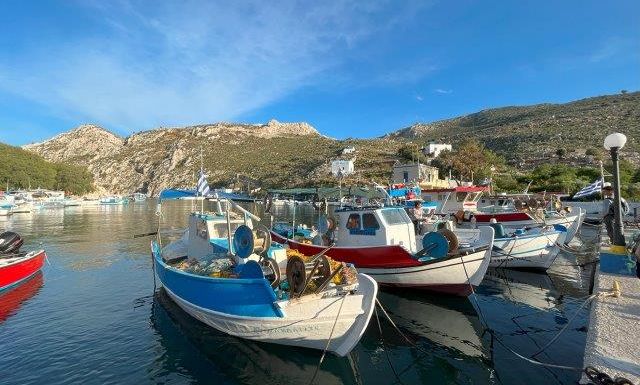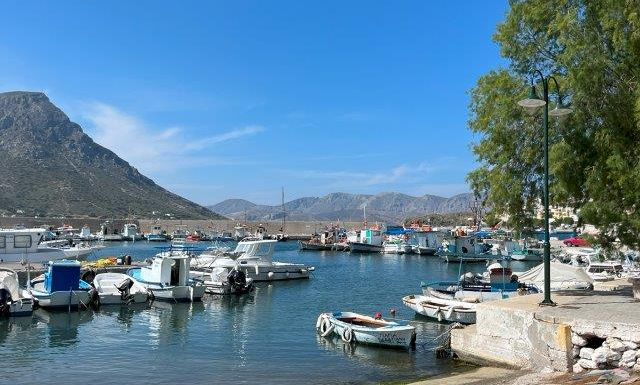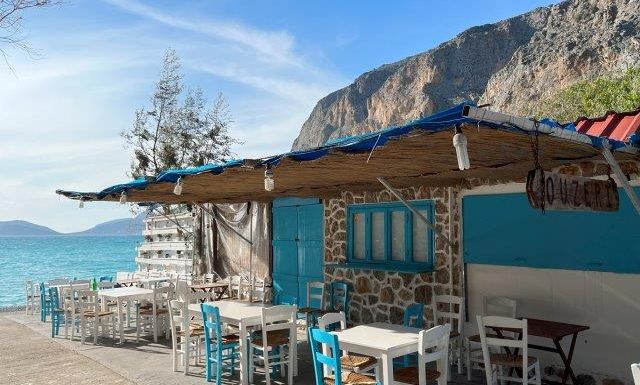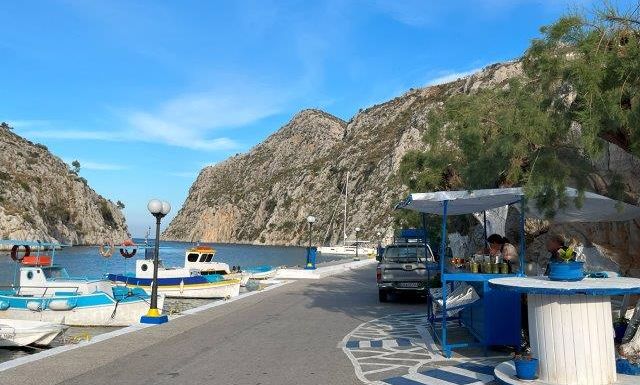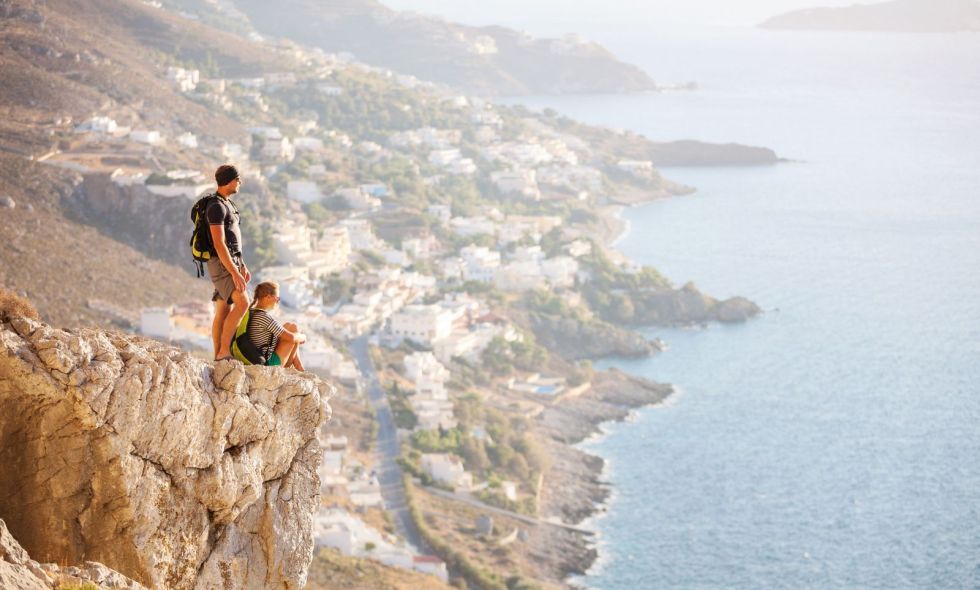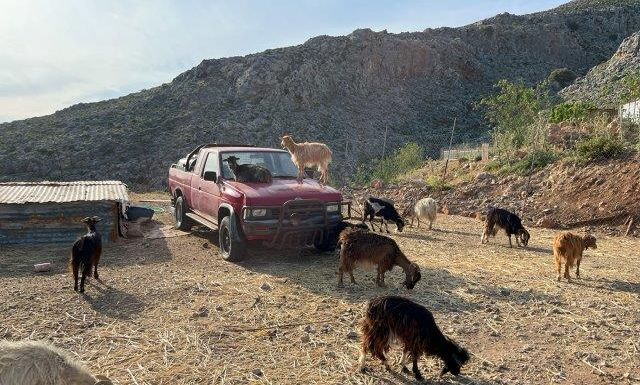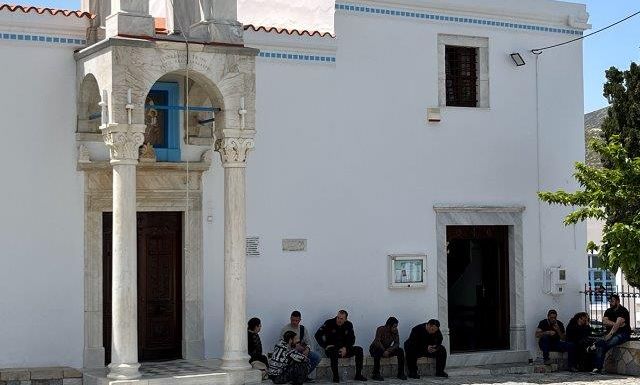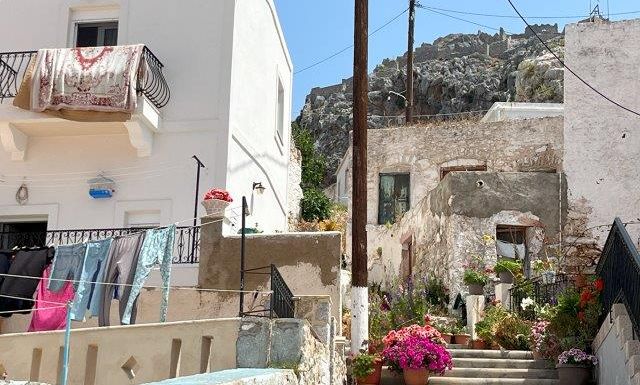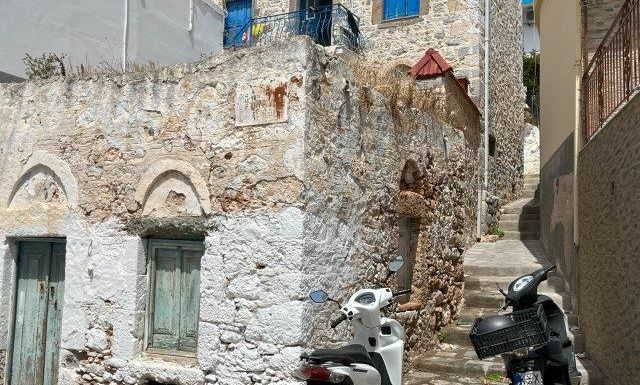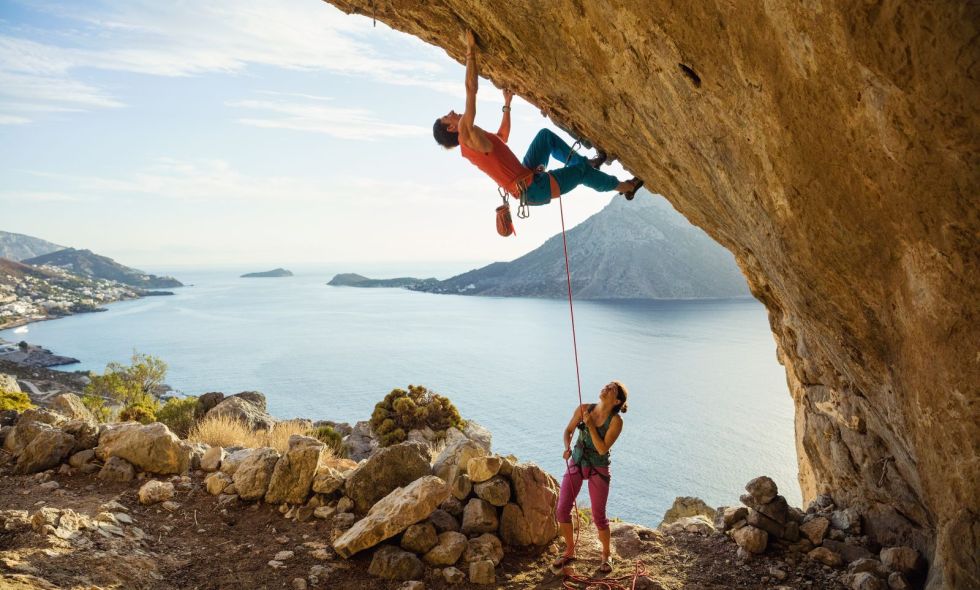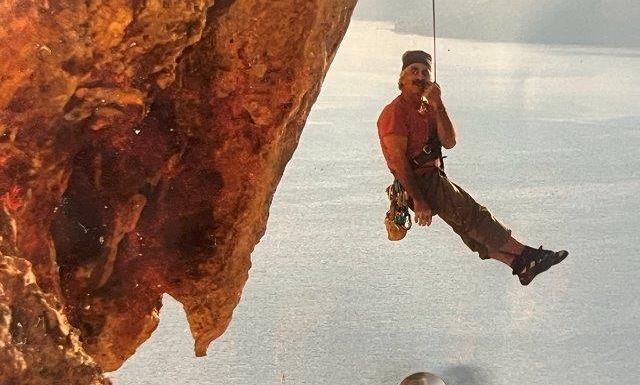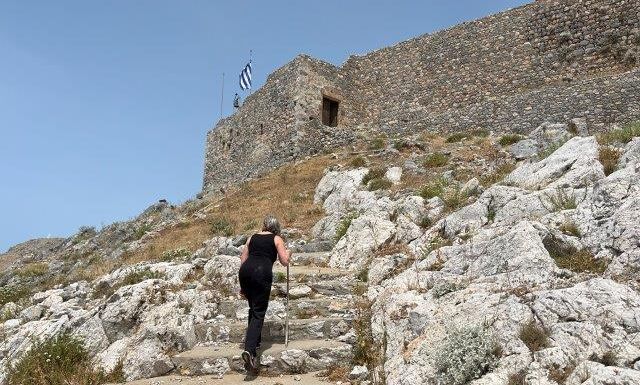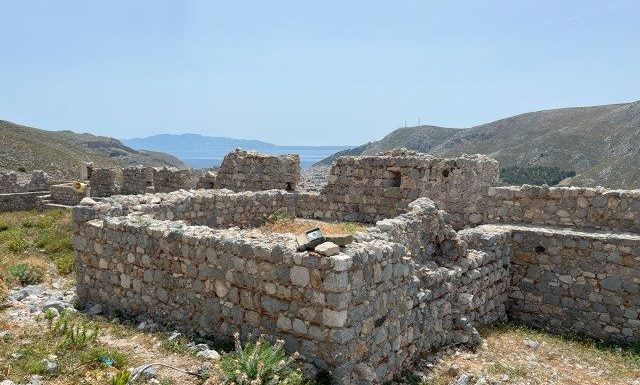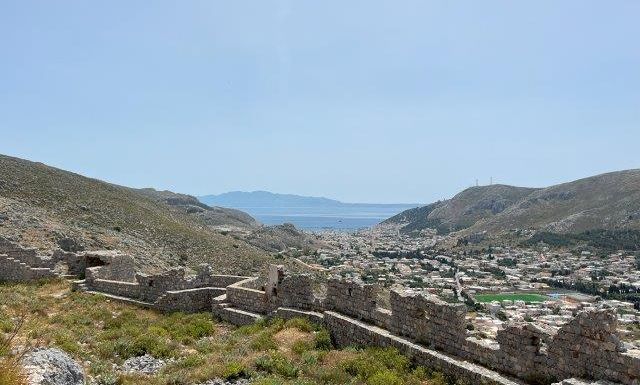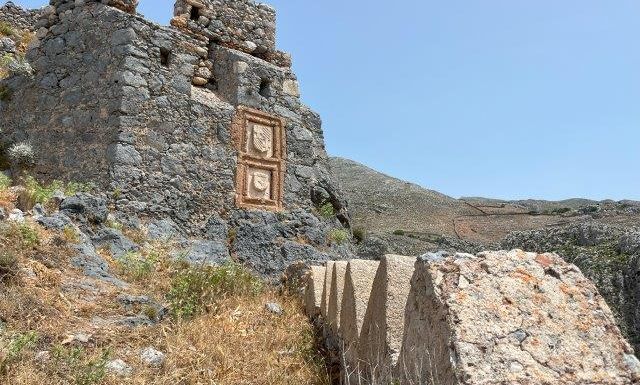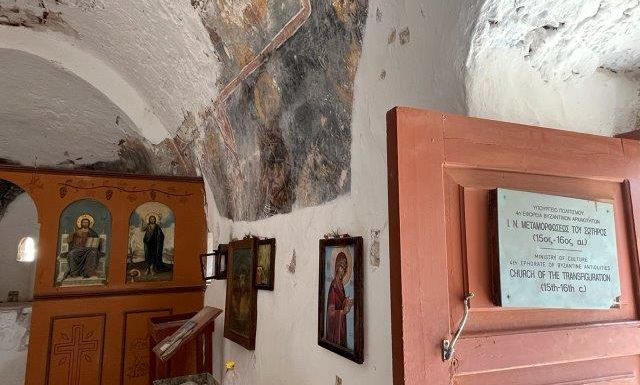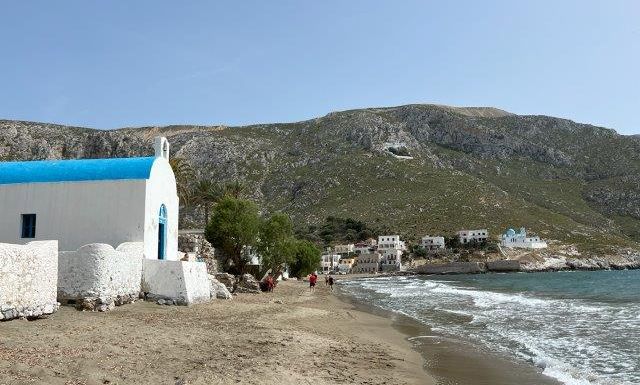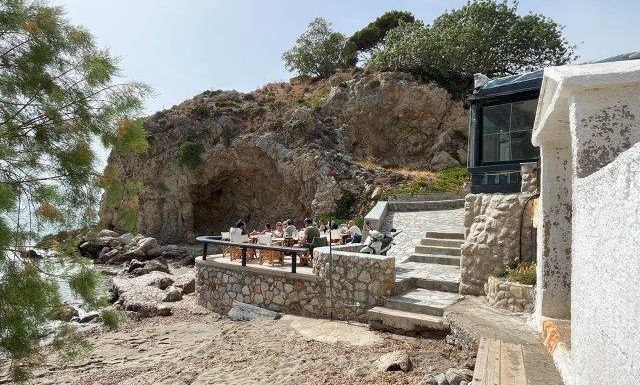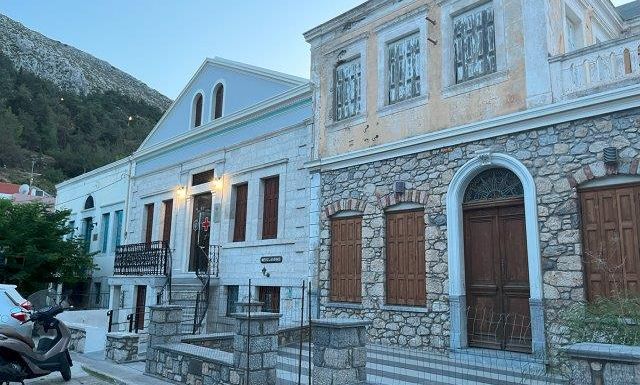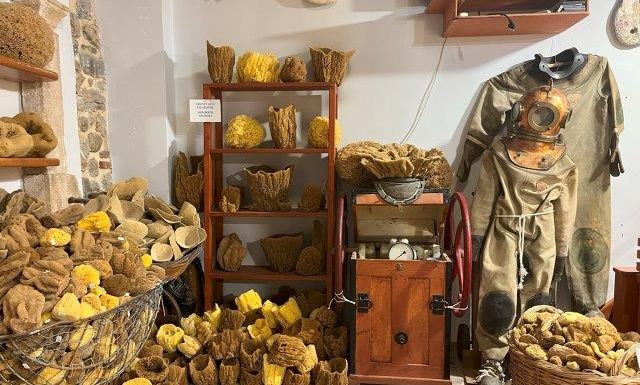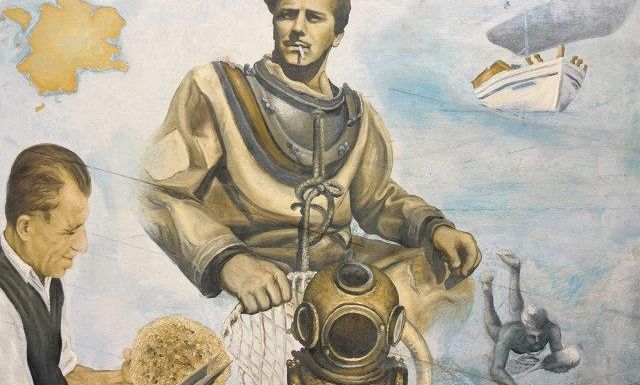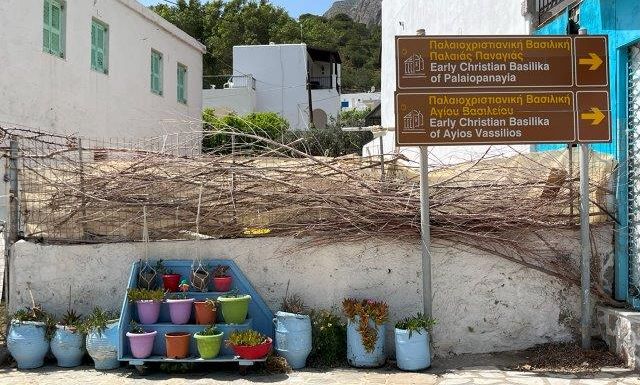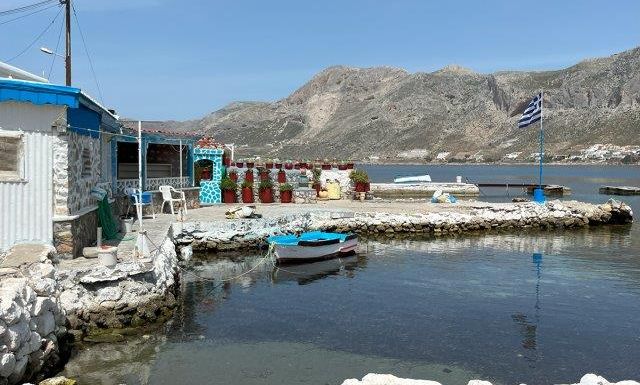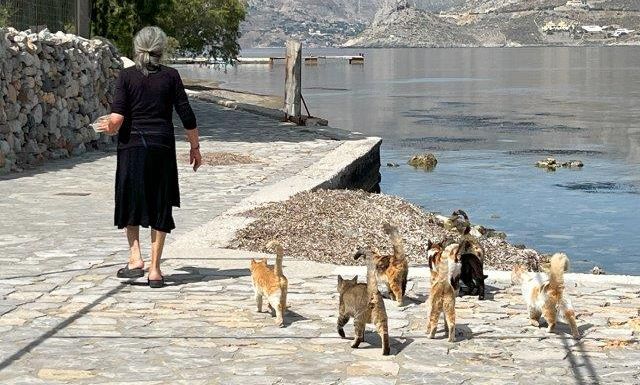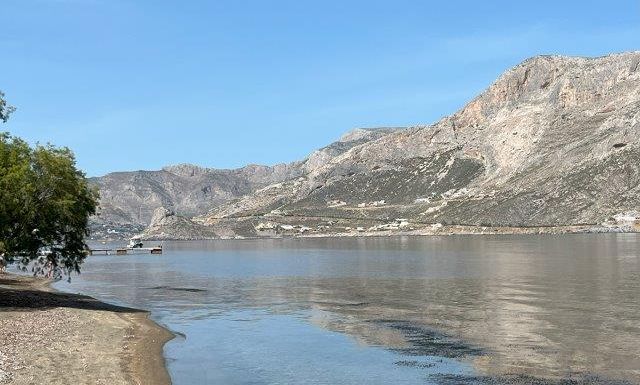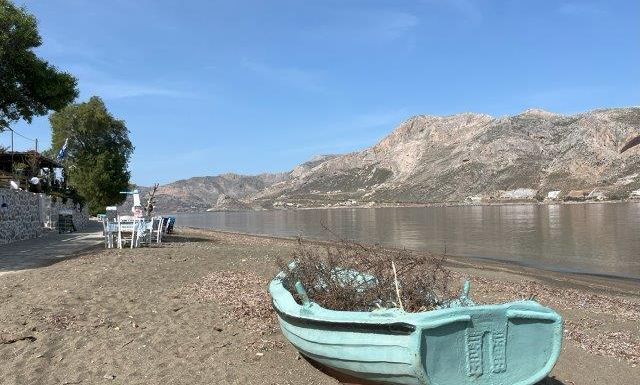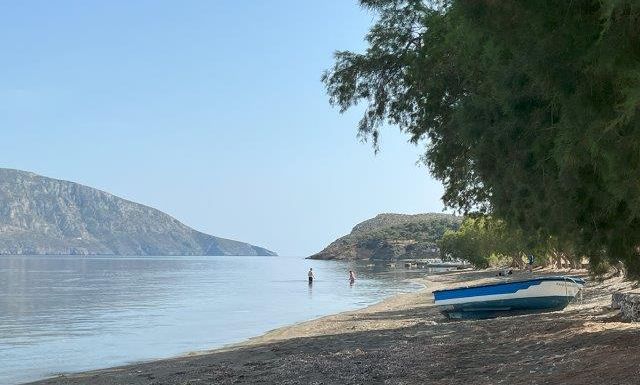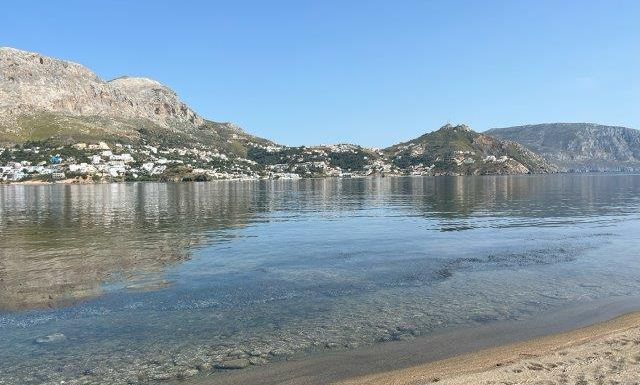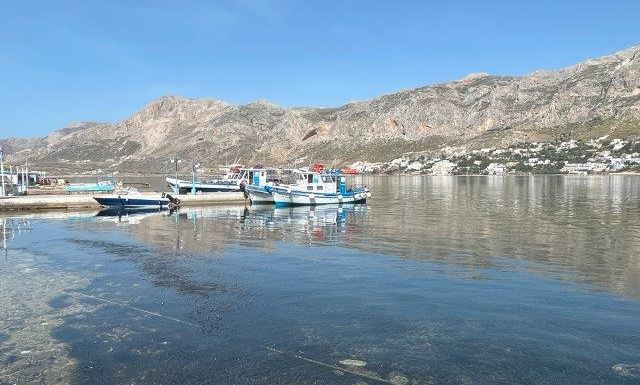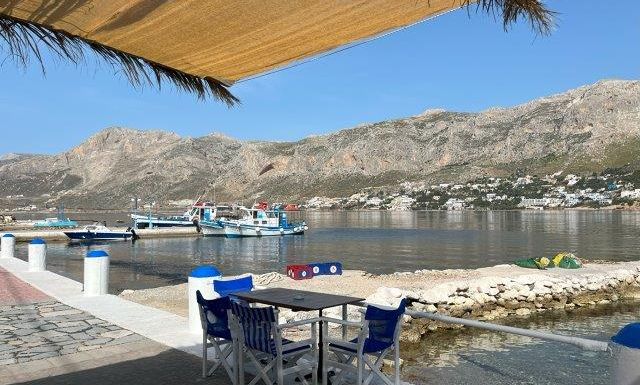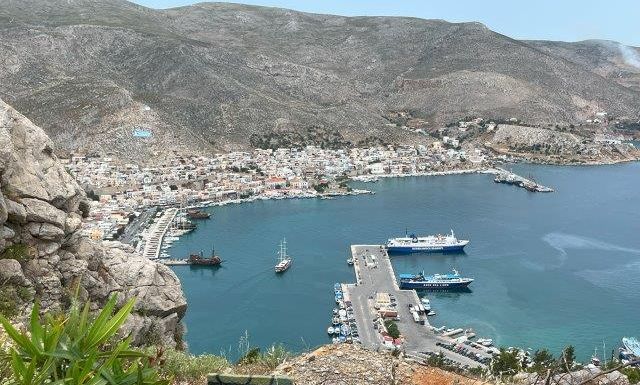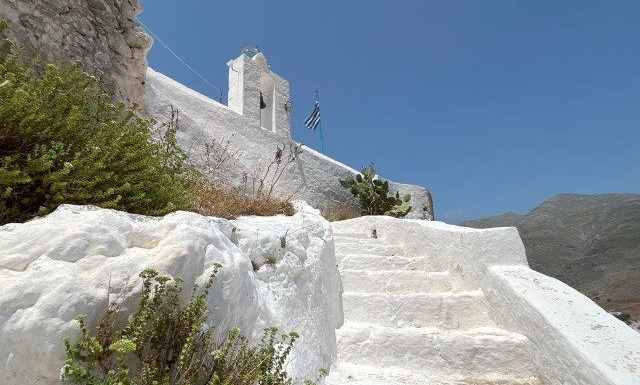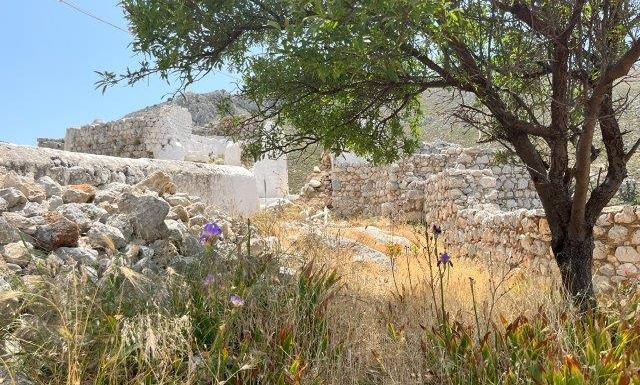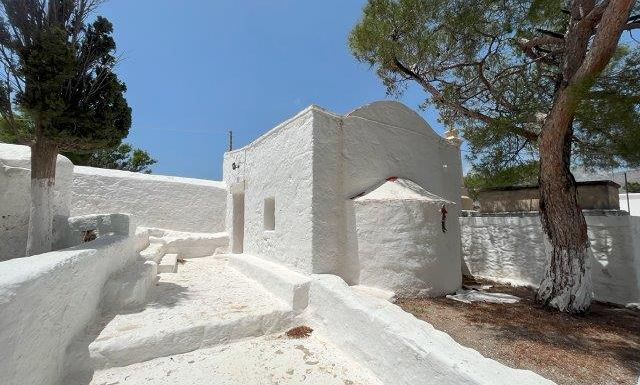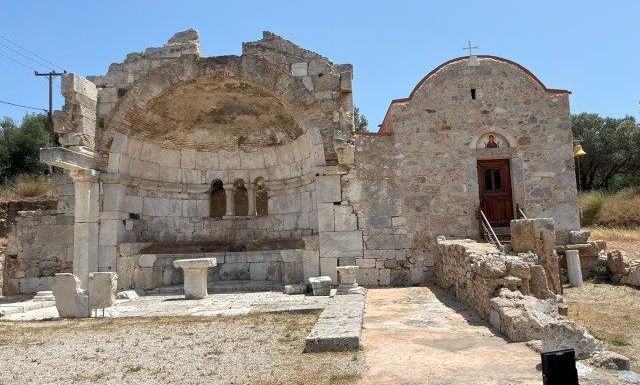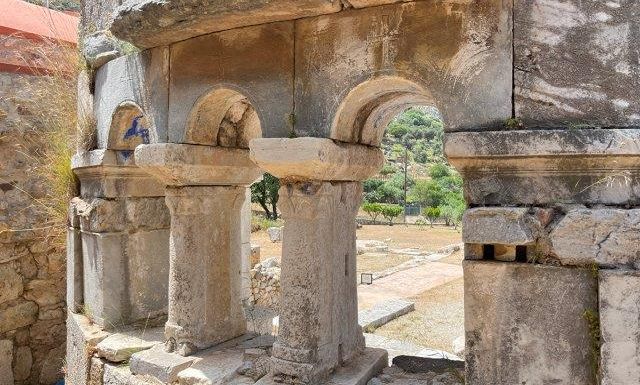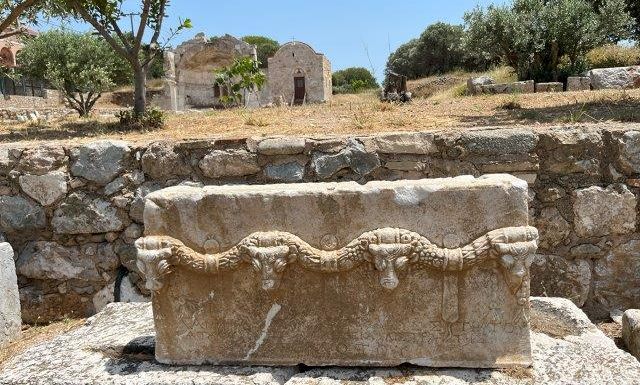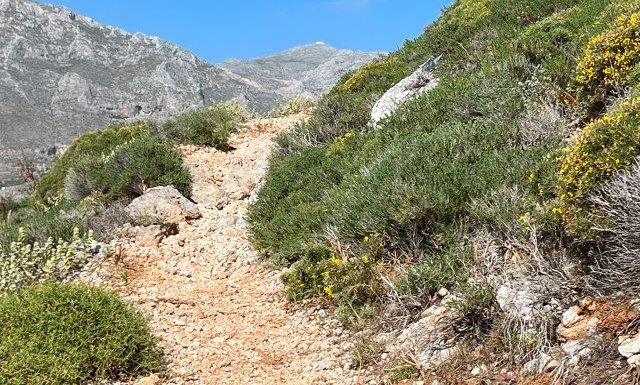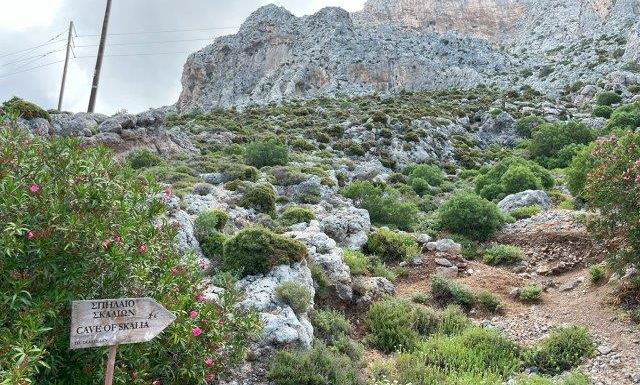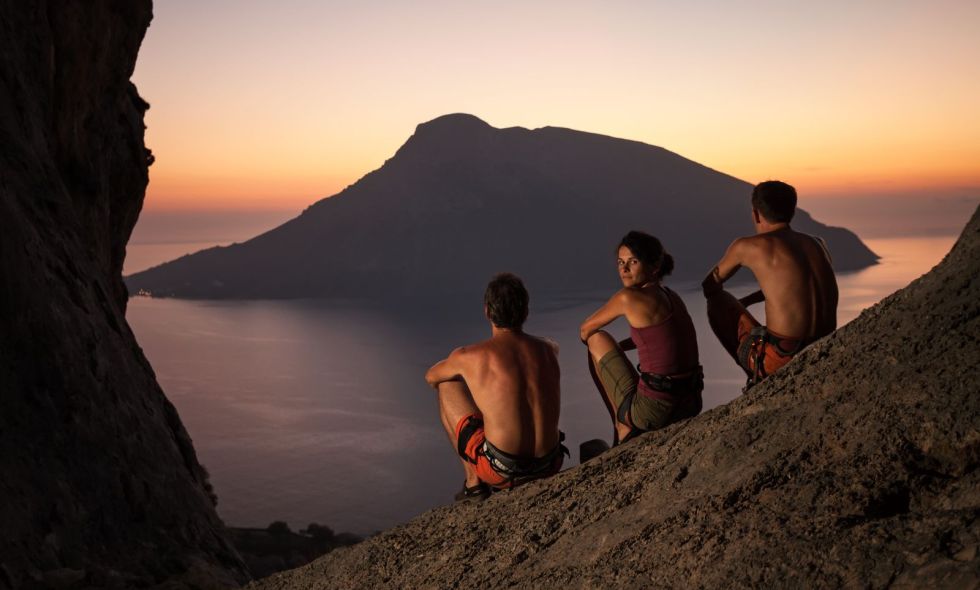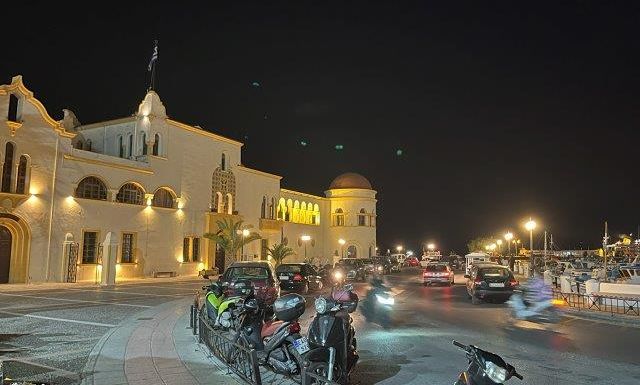“You see these layers of peeling paint?” asked a Kalymnian friend, “It tells Kalymmos’ history – blue was the colour of Greece, so whenever the Ottoman Turks came over to inspect the island, wherever they saw blue, they made the islanders paint over it with brown, then when the Ottomans left, the islanders painted everything blue again, and so on, layer upon layer.”
This is Kalymnos in a nutshell – historical, social and geological layers which have resulted in a winter population of well over 16,000, huge for a barren Aegean island.
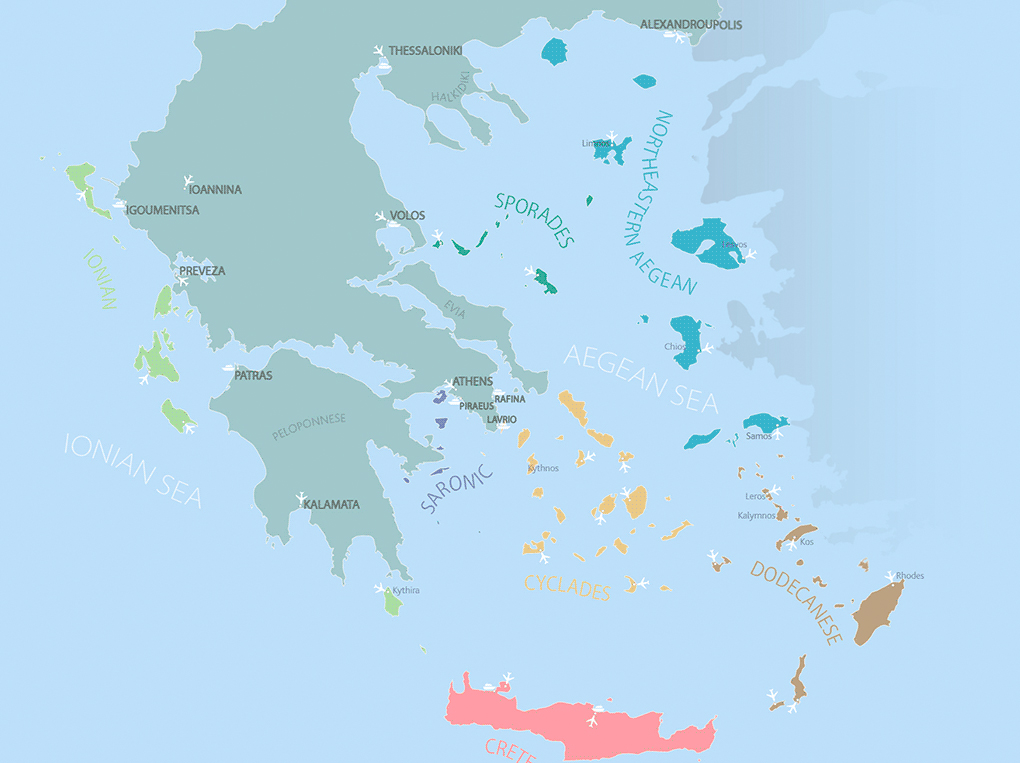
View Map
Kalymnos Portrait
HISTORY
Mycenaean bronzes, classical inscriptions, Hellenistic sculptures, Roman shipwrecks, Byzantine frescoes, medieval castles studded with escutcheons built by the Knights of St John, Ottoman era neo-classical mansions built, Mussolini-era municipal buildings from the interwar Italian occupation, and moderinisation driven by returnees from those who fled to Australia and the US to escape a post-war famine
SOCIAL
The lethal romance of its world famous sponge diving industry underpins all of Kalymnos – its food, culture, poetry, social structures, wealth, piety, music, traditions and philosophy are all born from this.
Sponges were found all over the Mediterranean, but only the Kalymnians were brave enough to dive down to the depths where the best sponges were found.
Sponge diving formed the social strata – Merchants at the top, then the captains who literally had the power of life and death over the divers whose safety lay in their hands and who built ornate neo classical houses with lacy wrought iron balconies. At the bottom were the divers – the young men who risked their lives every day – young, impossibly cool, heroic and what all small Kalymnian boys wanted to become when they were old enough. They were the poorest, but were – and still are the folk heroes- the John Waynes and Marlboro men of their time.
The social differences are something that inform Kalymnian politics still today – it leans to the left, though voting is even today rather like supporting a football team in Greece – less to do with the quality of the candidates or their manifesto, than following traditional feudal loyalties inherited from parent and grandparent. The fabulously wealthy sponge families gave generously to the island, brought education, social mobility and wealth, recognising the suffering that was endured at the bottom of the food chain. A delicate relationship still exists which hangs together bound by a mutual respect and love and pride in the island.
GEOLOGICAL
The glowering limestone rocks, pinnacles and cliffs that ring the island turn red at sunset and are pierced and torn with caves and ravines. Churches set in pine and cypress groves look down from the crags and the goat-infested stony plateaux onto the valleys below.
Profitis Ilias at 760 metres is the highest point in the Dodecanese. In 1996, an Italian rock-climber came for his honeymoon, was stunned at the virgin climbing paradise, went straight to the Mayor to organise a climbing collaboration, and the next day returned to Italy. History does not tell us how his bride reacted, perhaps she was a climber too. He returned in September with an Italian climbing crew to establish the climbing routes, and now Kalymnos is the second best sports-climbing area in the world. Only Yosemite is more highly regarded. The village of Massouri is climbing central. It is also the best area for teens and twenty something year olds to chill in the evening, with a string of fun boutiques and climbing equipment shops, bars, vegan cafes, easy restaurants and music, there is a vegan/hand-knitted vibe, with yoga classes, Tibetan prayer flags and a good energy created by the nature-loving and well travelled, low-footprint visitors.
BEST FOR
Activities – hikes, rock climbing, authentic ( as opposed to preserved in aspic) island life, great sea-food, diving, museums, ruined medieval castles, unpretentious and warm hospitality.
WORST FOR – the beaches are mostly dark sand and some are rather sea-weedy – bring beach shoes to avoid burned feet!
WOULD SUIT:
Sportsmen, explorers, historians, vegetarians, families, well-heeled hippies and crystal- collecting yoga practitioners.
WOULD NOT SUIT
Those looking of picture perfect iconic whitewashed villages, those wanting a Nobu or Louis Vuitton, celebrity viewings, or hoping to make serious damage to a credit card.
ACTIVITIES
After Yosemite, Kalymnos is the world’s second best sport rock climbing centre –
The Kalymnos Experience Group guides clients of all levels safely and expertly and Massouri village has a first class climbing shop!
Scuba Diving– Kalymnos has several PADI centres
Boat Hire – not a developed aspect but ask us to arrange! There are public boats across to Telendos island
Hikes – Apart from the rock climbing trails and routes, there are plenty of walks and trails and paths to monasteries – The Italian Path is a wonderful trail across the mountains.
Kayaking.
DON’T MISS
Buying a sponge from the amazing Sponge Warehouse shop and museum in Pothia
Sandy Kantouni Beach with a great restaurant.
High on the hillside above is the Monastery of the True Cross- a beautiful path zigzags up with ever more dramatic views switching sides as you walk up.
Pothia, the main port is a lively little town with a rather grand waterfront and a hinterland of lanes lined with neo-classical mansions. The Kastro looms above it, built by the knights of St John back in the 14th century. Intrepid visitors are rewarded for the half hour scramble past barking dogs and up a stony path, by entry into a deserted site of wild herbs, lovely views over the port, and tumbled ruins. Peek inside a deserted chapel and find lit candles and smouldering icons looking solemnly at you. Marble columns are upcycled into Byzantine brickwork, and low snaking walls rim the ravine edges. Anyone who was anyone back in the fourteen hundreds built a chapel to their patron saint within the walls of the castle, safe from the pirates that plagued the Easter Mediterranean trade routes for centuries.
The Mussolini era public buildings give a de Chirico feel to the main square.
Just outside Pothia lies the cave Church of Panteleimon, wedged into a cleft in the mountain with a freshwater spring running down the little ravine next to it and an ornate bell tower outside. Inside, cool dim glimmerings of icons and stained glass meet the eye as it adjusts to the dark, and lighted prayer candles waver in their bed of molten liquid wax , their smoke prayers rising up to the ceiling.
The charming little port of Melitsahas with a picturesque waterfront taverna “Anna’s”. we recommend the sea-urchin salad, tiny Kalymnos shrimp and whitebait.
The picturesque creek of Vathi in the shadow of two high mountains. Impossibly pretty, with bobbing fishing boats, a freshwater creek with giant carp, byzantine church remains, and kayaks for exploring the bay, Vathi offers crystalline and calm swimming and a rock face traverse where the worst thing that can happen to you is you fall a few meters into the sea. Fresh, hot, apple loukoumades and other local delicacies are sold on the side. Caves in the mountainside were used by locals to keep Christian teaching going in times when it was forbidden under the Ottomans, and a cluster of early Christian churches hide in the rocks and undergrowth, waiting to be explored.
Telendos Island is haunting, pyramid shaped lump of rock with a white frill of small houses and geranium-filled seafood tavernas around its feet. This little isle is one of Kalymnos’ iconic sights, and in the evening, sunset viewers amass in the hip bars and open air restaurants to watch the show as the sun slips behind it. A sort of hippy version of Santorini.
Vlihadia is a sheltered creek near Pothia – two pretty pebble beaches with clear calm water are wonderful for swimming, and on the first one, the Paradisio restaurant is right on the beach, has seriously good food, imaginatively presented, and bean bags to lie on the beach. The small maritime museum is here and displays sponges and sponging paraphernalia, and finds raised from the sea.
The Traditional Kalymnian House at Vothyni is a must- a gem of a folklore museum – just under the Church of Agios Savvas, it is a treasure chamber brimming with old photos, cribs, costumes, hanging larders, yellowing heaps of paper, ancient manilla folders, embroidery, festive undergarments, limoges porcelain, cheese making equipment, diving helmets, chamber pots, looms, wedding certificates, sponges, rugs, dolls, baskets and glassware.
The Archaeological Museum – the prize exhibit is The Lady of Kalymnos is a very rare, over-sized bronze statue of an imposing Brunnhilde of a woman.
The wonderful remains of the temple of Apollo of Dilios which has the most glorious mosaic floor featuring a camel with a bell round its neck.
The laid back beaches of Emborio, and lunch in Evdokia’s “Harry’s Paradise Garden” restaurant, where Evdokia cooks with local or home produced ingredients as the inspiration takes her – no written recipes she says – and does magic with flowers and trees.
HIGH SEASON
Full beaches and general business, but the island does not lose its character.
LOW SEASON- due to the rock- climbing industry, the season spreads late into the year and starts early, so this is a great choice for those coming out of season and still wanting to find lots of things open.
We do not show villa details on our site to protect the exclusivity of our owners’ properties. We offer a unique personal service to locate the perfect villa or yacht for you – to see villa details and get our expert guidance and insight please get in touch.
Our Villas in Kalymnos
Read about our villasFew luxury villas, so leap on anything that is waterfront and good design!

